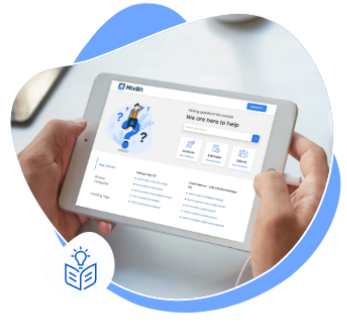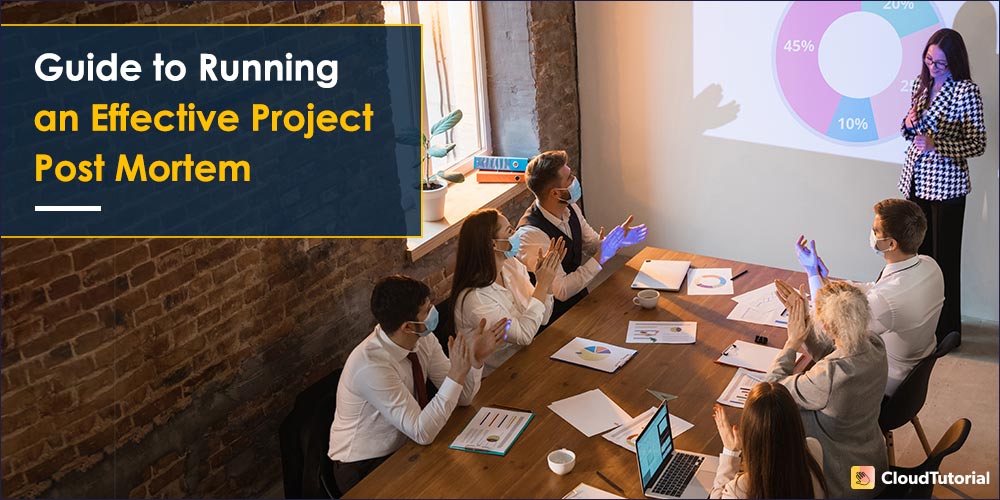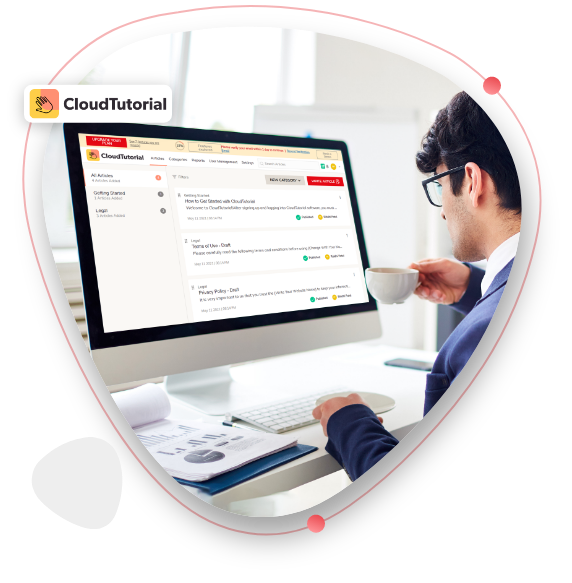Want to get a chance to divulge into a project’s course and examine why things functioned the way they did? Conduct a project post mortem meeting which not only increases transparency but also means that the next time when you run a post mortem meeting, you will have all the stats and information handy; without having to delve through ceaseless email chains.
The project management process plays a critical part in the achievement of business success. For the most strategic projects to prosper, refining internal processes and streamlining workflows are required. With an effective project post mortem meeting, you can identify what went wrong and what went right.
In this way, you can avoid making those similar mistakes in future projects and attain your organization’s goals. Let’s examine how to run an effective project post mortem in-depth.
Table of Content
What is a Project Post Mortem Meeting?
A project post-mortem meeting also called a retrospective meeting, is conducted when the project ends. The focus of this team gathering must be on scrutinizing the challenges and victories of the efforts paid. With the completion of this meeting, you would have recognized opportunities and best practices needed for improvement and to stay ahead in the market.
Hold post-mortem meetings that begin with a confirmation of the project’s possibilities and opportunities. Though such gatherings are made at the end of the project procedure, it is also valuable at each stage of a multi-stage project.
Step-by-step Guide to Running Project Post Mortem
During the course of particular agile project management, myriad decisions have to be made. In retrospection, several of such decisions will be gauged as sound and proper, while others may not seem so. If documented properly, these comprehensions might help to undertake other future projects.
If you do not pay attention to capture the changes to make, key learnings, and best practices, your upcoming project may face the threat of emulating the same errors. Not paying attention to capturing best practices, changes to make, and key learnings, your next project might face the risk of repeating the same mistakes. To run a productive project post-mortem meeting following steps should be taken:
How to Prepare for a Post-Mortem
Select a Moderator
To arrange your post-mortem meeting, a meeting worksheet, a meeting agenda, a recap document, and a pre-meeting questionnaire must be prepared.
You will require an individual with conflict resolution and leadership skills. That person must be acquainted with the project but must not be intensely involved. He or she will be accountable for the following aspects:
- Keeping the post mortem meeting on track
- Stopping or pausing the meeting if the discussion intensifies
- Distributing the post mortem questionnaire and agenda
- Settling disagreements
- Keeping the discussions productive
- Ensuring that the team follows the actual meeting agenda
Define Your Talking Points
The project manager must portray their thoughts on the consequences. Then, you can utilize these documented ideas to start fabricating the post mortem agenda.
Want Easy Documentation and Collaboration of Agendas?
Adopt CloudTutorial for incorporating an internal knowledge base where you can store and share your documents.
Collect Feedback from Your Team
You must focus to get data about what the team thought functioned well, as well as what did not. Preferably, you can conduct a pre-meeting discussion (a 15-30 minute gathering) or send out a survey.
Outline the Project’s Baselines for Schedule, Scope, and Cost
The factors like schedule, scope, and cost also termed as the ‘triple constraints’, most likely change during the project. You may use these causes to determine if the project has failed or succeeded.
Form a Presentation
This kind of presentation needs to draw attention to the accomplishments and issues observed in the pre-meeting discussions or analyses.
Craft an Agenda and Dispense It Out Before Meeting
Be sure to hand out the meeting agenda with sufficient time for attendees to evaluate it, and comprise:
- A list of basic rules to attend the post-mortems
- Talking points from the presentation
- The items from the survey, questionnaire, or pre-meeting discussion
How to Conduct a Post-Mortem Meeting

Plan the Post-Mortem Since the Commencement
Project post-mortems must be fragments of the plan from the commencement. So, the project team members will keep a record of their failures and successes as and when they occur.
Set Duration of the Meeting
Here, the ideal period for a successful post-mortem meeting must be decided. It can be:
- 90 minutes: This duration gives everybody time to express themselves. It permits an exhaustive discussion of concepts. On the contrary, such a long in-person meeting can be tiresome or be seen as a waste of energy and time.
- 30 minutes: This duration will force individuals to converse only the most crucial aspects and keep them engrossed. Nevertheless, such short meetings mean there is not adequate time to explore resolutions or discuss every key issue.
Assemble Attendees’ List
There are several opinions on the perfect size of project post-mortem meetings. Smaller meetings, with 5 to 10 attendees can stay more focused, but restrict participation to vital people. For a larger organization, a series of small meetings and then the final presentation on the lessons learned can be conducted.
Allot a Note-taker
Select someone who is not involved in the project management to keep track of the conversation and actionable matters. It is also a clever idea to record the post mortem meeting. In this way, one person can refer to it while crafting meeting notes.
Begin with a Brief Introduction
Here, you must cover all the basic ground rules and must remind the team that the meeting is meant for having a constructive discussion. Also, the meeting moderator will showcase their viewpoint and help them to feel safe and comfortable. This essential part of the project must last for a few minutes only.
Generate a Time-frame of Milestones
You may recapitulate the high-level result of the project and the primary anticipations. After that, construct a timeline of that project with chief milestones. Here, you must create a visual representation of the project wrap-up and deliverables, from signing the contracts to supplying the new product.
Start Registering Actionable Items
Every project success and issue should produce at least one actionable item. You may allocate an owner to each of such items. This individual will be answerable for incorporating such actions and achieving the desired goal.
Discover the Issues
At this phase, you must be aware of the roots of the meeting and investigate – what went right, what were the mistakes, and what actions you would take for all your future projects. The leader must ask both qualitative (How can we enhance the procurement procedure?) and quantitative (Rate the achievement of the procurement procedure on a scale of 1 to 10) post mortem questions to assist the team inspect each project’s success or issue.
End the Meeting
Thank each attendee for their participation and contribution. Devote a few minutes summarizing what you have learned and provide a timeframe for when the team has to follow the action and project plan. Also, you must end the said meeting on a positive note.
Segment the Post-Mortem Meetings’ Notes
Every attendee should get a copy or access to the internal knowledge base platform where the meeting notes are documented. This includes:
- A scrutiny of the root cause for every matter
- A summary of every project accomplishment and issue
- Lessons learned
- Project timeline of each success and problem
- A list of the actionable items and who is answerable for each
- The steps that were taken to analyze each success and problem, what valuations were made, and the subsequent steps taken to solve each

Do You Want a Centralized Knowledge Base System?
CloudTutorial delivers a robust knowledge-sharing system with custom roles and permissions.
Project Post Mortem Templates
The project retrospective procedure offers vital opportunities for team improvement and learning. There are two chief conditions where post-mortem meetings happen and have their respective templates to – Project postmortem template (as described above) and Incident post mortem template (for example, a website is down or a server crash or).
In both cases, the goal of both types of post mortem analysis template is to discover root causes along with their certain differences. Here is the format of a customizable post mortem template for your project:
Benefits of Project Post Mortem
The project postmortem is a forum for your stakeholders, clients, and team members to analyze every aspect at the end of a project. This will impart insights on what were the loopholes and what actions can be taken to rectify them. Below listed are the benefits of post mortem:
- Boost communication across the departments
- Improve team efficiency
- Share information regarding the outcome and be transparent in business
- Celebrate on project completion and achievements
- Boost teamwork and raise morale
- Allow the team to discuss concerns and resentments
- Gauge learnings from mistakes
The aspects needed for writing a project post mortem dates of the project, why it was launched, the results of the project, honest feedback from every team member, next action steps, and describing refined procedures to be implemented for the future project.
Post-mortem analysis is a procedure in which you recapitulate what went wrong and what should be rectified in the project. Also, you summarize what went well and confirm that it should be repeated. Such analysis produces actionable items and who is accountable for each.
An effective project post mortem process can improve your team’s practices and increase participation by boosting a work culture of open discussions. Do you want to score more project triumphs? With CloudTutorial, you can create project planning documentation, collaborate with your team, and communicate in real-time to solve queries. Give our software a try by trying a 14-day free trial.
Try it out before you decide.
Create a test article NOW!
Using this tool, all you have to do is add your first test article and see how it looks. Now, you don’t have to sign-up or login into CloudTutorial software just to check how your first article appears.


